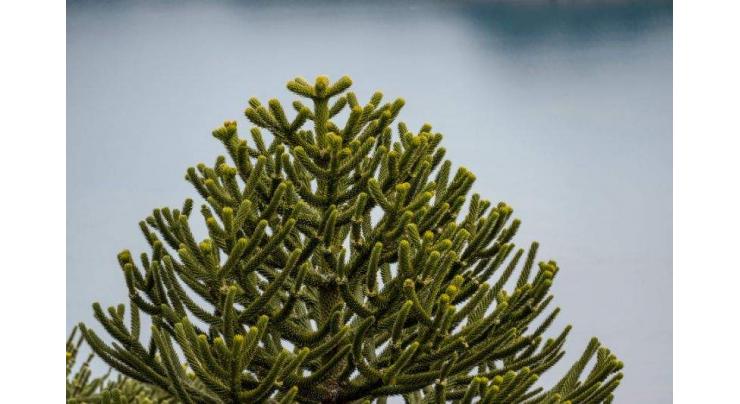
Chile's Pine Forests: A Botanical Dinosaur Bound For Extinction?
Sumaira FH Published December 11, 2018 | 12:34 PM

In Quinquen, an indigenous community in southern Chile, Ricardo Melinir shows off a forest of Chilean pine trees -- the araucaria araucana, a "living fossil" seen as sacred by several local tribes.
Quinqun, Chile, (APP - UrduPoint / Pakistan Point News - 11th Dec, 2018 ) :In Quinquen, an indigenous community in southern Chile, Ricardo Melinir shows off a forest of Chilean pine trees -- the araucaria araucana, a "living fossil" seen as sacred by several local tribes.
He managed to save the "Monkey Puzzle" trees -- some of which are 1,000 years old or more -- from logging companies, but they are still under threat from blight and climate change.
"It is difficult to say how old these pines are," says the 60-something Melinir, shivering in the cold.
He points to a giant tree felled in the winter months earlier this year, a victim of heavy snow and old age.
The forest is located in Araucaria province, in the Chilean Andes about 600 kilometers (375 miles) south of the capital Santiago.
The trees, declared a part of Chile's national heritage in 1976, can grow up to 60 meters (200 feet) in height and three meters in diameter.
In Quinquen, at least 40 percent of the pine tree forests are wild, says Melinir, who is the head of the Pehuenche community, which takes its name from the tree's fruit.
In 1991, the restoration of a democratic government in Chile following the Pinochet dictatorship that began in 1973 allowed the Pehuenche to recover their ancestral lands, which they had lost 50 years before.
Today, 50 or so families -- a total of 200 people, all of them named Melinir -- live throughout the area, which is the first indigenous conservation zone established in Chile.
But climate change has meant more wildfires, and many trees have been destroyed. Their pine nuts -- prized by chefs the world over -- have been stripped from what Neruda once called "Chile's towers."All told, the trees are more vulnerable than ever.
Recent Stories

Iranian President arrives in Lahore today

Currency Rate In Pakistan - Dollar, Euro, Pound, Riyal Rates On 23 April 2024

Today Gold Rate in Pakistan 23 April 2024

Islam enlightened world with its teachings about knowledge: Dr Jamileh

Record London close as oil prices drop on easing Middle East fears

TV tower in Kharkiv struck as Russia captured village

LCCI language courses from May 1

Governor for service oriented governance in Punjab

Survivors tell of panic at C.Africa river boat disaster

Enrolment campaign, awareness walk held in Lower Chitral

“Say no to plastic- yes to tress” campaign kicks off in Attock

'PML-N secures people's trust in by-polls'
More Stories From World
-
More than 50,000 displaced by clashes in northern Ethiopia: UN
1 minute ago -
Tensions flare at US universities over Gaza protests
41 minutes ago -
Taiwan hit by dozens of strong aftershocks from deadly quake
51 minutes ago -
Trump faces contempt hearing for comments on witnesses
60 minutes ago -
Malaysia military helicopters crash, killing 10
1 hour ago -
China issues highest-level rainstorm warning in southern Guangdong: weather agency
1 hour ago
-
Asia hit hardest by climate, weather disasters in 2023:UN
1 hour ago -
Murray buzzer-beater lifts Nuggets over Lakers, Knicks stun Sixers
1 hour ago -
Musk lashes Australian order demanding X remove stabbing videos
1 hour ago -
In world first, Venice to trial day tickets
1 hour ago -
Highest-level rainstorm warning issued in south China's Guangdong
1 hour ago -
Rwandan LGBTQ fashion designer plans comeback after arrest
1 hour ago